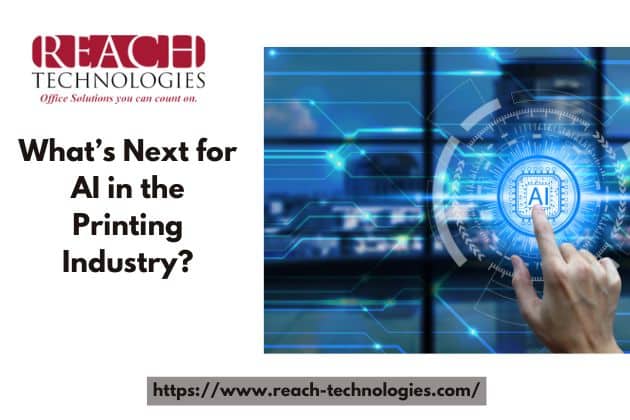The Evolution of AI in Printing
The printing industry has long been a cornerstone of communication, but with the rapid emergence of artificial intelligence, it is undergoing a transformative shift. From early automation in prepress operations to sophisticated AI-driven workflows, the industry has evolved beyond mere mechanization. AI is now playing a pivotal role in enhancing efficiency, reducing waste, and unlocking new creative possibilities. The question is no longer whether AI will impact printing but how far its influence will extend.
AI-Powered Automation and Efficiency
AI-driven automation is revolutionizing production lines, minimizing human intervention while maximizing accuracy. Intelligent software is now capable of detecting inconsistencies in color calibration, predicting maintenance needs for high-volume printers, and optimizing ink usage to reduce costs. Machine learning algorithms analyze vast amounts of data, refining print quality and ensuring seamless production. This efficiency not only boosts profitability but also aligns with sustainability goals by minimizing material waste.
Smart Customization and Variable Data Printing (VDP)
In an era where personalization is paramount, AI is pushing the boundaries of variable data printing. Through deep learning and predictive analytics, printers can generate highly customized outputs tailored to consumer behavior. Whether it’s direct mail marketing, personalized packaging, or one-of-a-kind book prints, AI ensures that every piece speaks directly to its intended audience. As consumer expectations for bespoke experiences rise, AI-powered customization will be the key differentiator in print marketing.
AI-Enhanced Quality Control and Predictive Maintenance
The ability to identify errors before they occur is a game-changer for the printing industry. AI-driven quality control systems use computer vision to scrutinize prints in real time, detecting microscopic defects that the human eye might miss. Additionally, predictive maintenance algorithms analyze machine performance, forecasting potential malfunctions before they lead to costly downtimes. This proactive approach enhances productivity, prolongs equipment lifespan, and significantly reduces operational disruptions.
The Role of AI in 3D Printing
While traditional printing continues to benefit from AI advancements, 3D printing is experiencing an even greater AI revolution. From generative design techniques that optimize material usage to AI-powered slicing software that enhances print precision, the integration of artificial intelligence is pushing additive manufacturing to new heights. AI’s ability to analyze and adapt printing parameters in real time is fostering innovations across industries such as aerospace, healthcare, and consumer goods.
Sustainability and AI’s Role in Eco-Friendly Printing
Sustainability is no longer an option but a necessity. AI is emerging as a crucial tool in reducing the environmental footprint of the printing industry. By optimizing energy consumption, minimizing ink and paper waste, and recommending eco-friendly materials, AI is driving a greener printing revolution. AI-powered supply chain analytics also enable printers to source sustainable raw materials efficiently, further advancing the industry’s commitment to environmental responsibility.
The Future: AI-Driven Design and Creativity
Beyond automation and optimization, AI is also redefining the creative landscape of print design. AI-generated artwork, typography suggestions, and automated layout tools are augmenting human creativity rather than replacing it. Designers can leverage AI to experiment with complex patterns, dynamic visuals, and innovative compositions that were once time-consuming to achieve manually. This convergence of AI and artistry is ushering in a new era of limitless design potential.
Challenges and Ethical Considerations
Despite its numerous advantages, AI integration in printing is not without challenges. Concerns surrounding data privacy, intellectual property, and job displacement must be addressed. The reliance on AI for creative decision-making raises ethical questions about originality and artistic integrity. Industry leaders must navigate these complexities while ensuring that AI serves as an enabler rather than a disruptor.
Conclusion
AI is poised to redefine the printing industry in ways previously unimaginable. From streamlining production to enhancing personalization, improving quality control, and driving sustainability, its impact is profound and far-reaching. As technology continues to advance, the synergy between human ingenuity and artificial intelligence will shape the future of print, unlocking possibilities that blend efficiency with creativity. The next chapter of printing is unfolding, and AI is leading the way.

